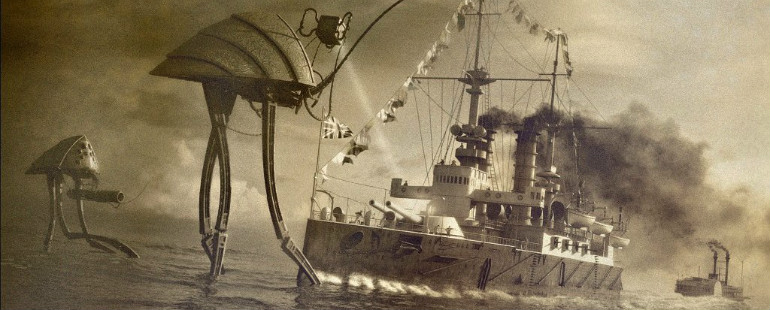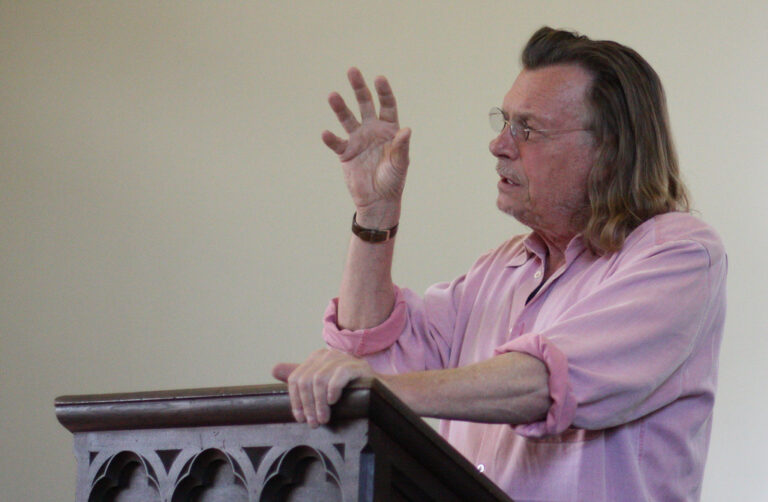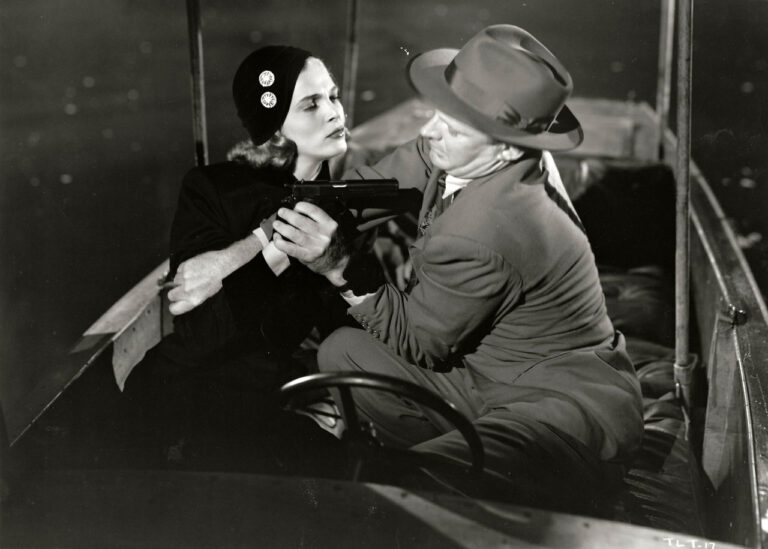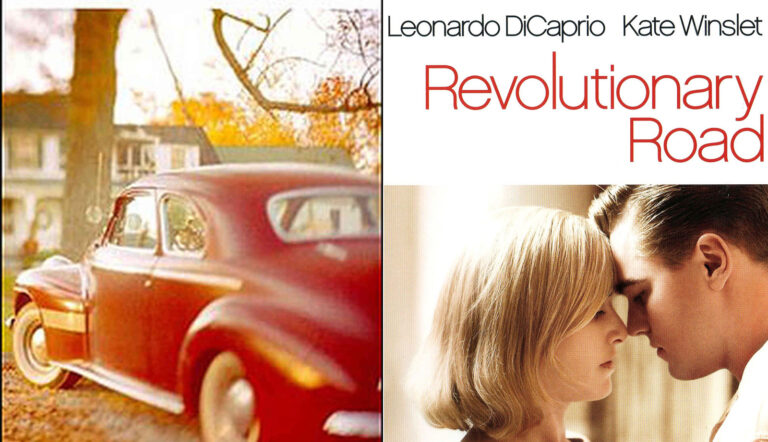Aliens in Science Fiction: What’s “Out There” Has Always Reflected What’s “In Here”

While science fiction has long been obsessed with robots, the genre has an even longer relationship with aliens, who are often far scarier: where they came from, how they think, and what they want are questions to which there is no comforting answer, if there’s an answer at all. The history of alien narratives reveals fear not just of the unknown, but fear of ourselves and what we may become. These stories critique humanity’s less admirable traits, such as xenophobia, greed, and close-mindedness, which manifest in political and societal movements such as capitalism, class stratification, and war-mongering.
Gulliver’s Travels, written by Jonathan Swift in 1726, offers some of literature’s first glimpses at intelligent non-human life forms. First, Swift plays with size—the Lilliputians stand “not six inches high” and the Brobdingnagians are “as tall as an ordinary Spire-steeple.” In book three Swift creates an alien landscape, the floating island of Laputa, and his most ground-breaking move occurs with the introduction of the Houyhnhnms, intelligent talking horses who rule the Yahoos, primitive human beings. Likely influenced by Galileo’s belief that Earth wasn’t the center of the solar system, Swift subverts the pecking order by introducing a species superior to humans. After returning home, Gulliver becomes an outcast, a Yahoo who finds “the smell of a Yahoo . . . very offensive,” yet who isn’t a Houyhnhnm—he himself becomes alien.
H.G. Wells established aliens as a science fiction staple in a trio of foundational stories. In his 1895 classic, The Time Machine, the narrator travels to the year A.D. 802,701, when earth is populated by the Eloi, childlike, genderless creatures who eschew work and subsist on fruit. The narrator attributes the Eloi’s evolution to technology: “One triumph of a united humanity over Nature had followed another. Things that are now mere dreams had become projects deliberately put in hand and carried forward.” Later, the narrator encounters the Morlocks, primitive subterranean creatures who provide the Eloi’s cushy existence. The Eloi and Morlocks are both very much other, coming from not another planet, but from another time. Homo sapiens had become two separate species, one evolving from the upper class and the other from the lower. Wells’s narrative reflects Darwin’s 1859 Origin of the Species, as well as the Communist Manifesto: “There were no signs of struggle, neither social nor economical struggle. The shop, the advertisement, traffic, all that commerce which constitutes the body of our world, was gone.” Wells’s work critiques class divides, capitalism, and advancing technology and suggests that these forces will make humans impotent or grotesque. Such threats come from within, rather than from the stars.
Wells’s most famous work, War of the Worlds, was published in 1898—two years after Nicola Tesla first suggested contacting aliens with radio waves—and offers a more traditional invasion narrative. In 1938 Orson Welles adapted the story for radio and triggered mass panic when listeners believed the invasion was real. Wells’s narrative was influenced by Percival Lowell, an astronomer who asserted that Mars contained canals constructed by an advanced species. Wells’s Martians aren’t little green men—they’re bear-sized, tentacled monsters that drool saliva as though rabid. They annihilate humans with a “Heat-Ray” and toxic gas expelled by bazookas. Technologically superior aliens remain frightening and compelling enough to power countless narratives.
In 1901 Wells published The First Men in the Moon, in which moon-faring humans get captured by giant ants called Selenites. The men assert their superiority and “declared our intention of standing no nonsense from any confounded insects . . . we decided it ill became men to hide shamefully upon a mere satellite.” Wells establishes another enduring theme of alien narratives—the humbling perspective that humans are neither at the top of the food chain nor at the center of the universe. Wells’s socialist leanings inform his depiction of a Selenite society in which every creature pitches in according to its specialization: “With knowledge the Selenites grew and changed; mankind stored their knowledge about them and remained brutes.”
Wells’s delivery of societal critiques via alien narratives influenced authors such as Ray Bradbury. In The Martian Chronicles, after nuclear war destroys Earth, humans bring their destructive habits to Mars where chicken pox exterminates the native species, a reference to the spreading of smallpox to Native Americans, as well as to Wells’s Martians, who also die of disease. The humans essentially piss on Mars to mark their territory:
Biggs weaved to the rim of the Martian canal. He carried six empty bottles and dropped them one by one into the deep blue canal waters. They made empty, hollow, drowning sounds as they sank…‘I christen thee Biggs, Biggs, Biggs Canal.’
Bradbury paints humans as xenophobic, greedy, and violent, while the Martians are a “found” people who have discovered secrets of life elusive to humans: “They quit trying too hard to destroy everything, to humble everything . . . They never let science crush the aesthetic and the beautiful.” Humans aren’t the good guys in this narrative.
During the Red Scare, the prospect of ideological evils popularized alien possession narratives. In Robert Heinlein’s 1951 novel The Puppet Masters, slugs from Titan control humans by attaching to their nervous systems. People used as puppets is perhaps even more terrifying than nuclear annihilation. Heinlein’s manifesto of paranoia influenced Jack Finney’s 1955 novel The Body Snatchers, in which seeds from space float down to earth and hatch human doppelgängers while the originals turn to dust. In this book, humans’ penchant for destroying worlds motivates the aliens.
Some aliens adopt a parental stance toward humans, such as in David Brin’s Uplift series, in which “patron” races genetically boost other races, propelling them into sentience in exchange for 100,000 years of servitude (humans uplift dolphins and chimpanzees, but don’t know who uplifted them). In Arthur Clarke’s Childhood’s End, the alien Overlords free humanity from war, poverty, disease, and crime. Octavia Butler’s Lilith’s Brood depicts aliens who splice their genes with human genes to resurrect a smoldering Earth. In these stories, aliens prevent humans from destroying themselves, though readers are often left wondering whether that’s a good thing.
An antidote to more serious alien narratives, Douglas Adams’s Hitchhiker’s Guide to the Galaxy perpetuates the idea that humans are the clueless punchline of cosmic jokes and that nonsense, irony, and sarcasm (and mice) reign supreme: “In the beginning the Universe was created. This has made a lot of people very angry and been widely regarded as a bad move.” Whereas other alien narratives challenge humanity’s uniqueness, condemn its flaws, and contest its superiority, Douglas Adams suggests that laughing at humanity beats crying.
Whether aliens represent an existential threat, salvation, or something in between, science fiction writers use them like a mirror, forcing us to take a hard look at ourselves. When we look into it, we might not see a tentacled monster or a pod person, but what we do see might be much scarier.
Image: An artist’s rendering of H.G. Wells’s Martians from The War of the Worlds


